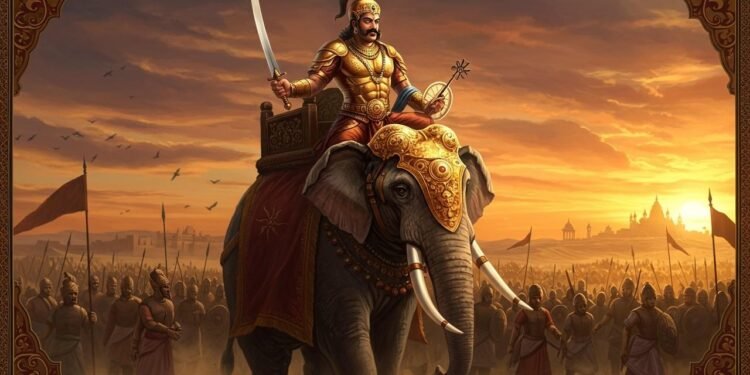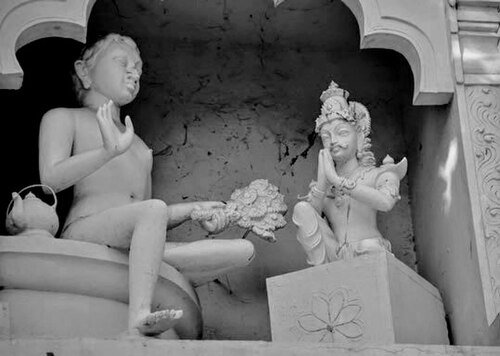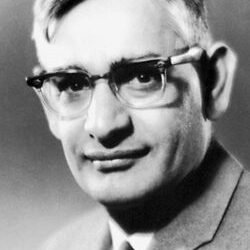Introduction
Chandragupta Maurya (r. c. 321–297 BCE) overthrew the Nandas, unified much of the subcontinent, and established the Mauryan Empire with a highly centralized administration recorded in Kautilya’s Arthashastra and Greek envoy Megasthenes’ Indica.

Rise and consolidation
Overthrow of the Nandas: With Kautilya (Chanakya) as strategist, Chandragupta seized Magadha around 321 BCE, then moved to secure the northwest destabilized after Alexander’s retreat.
Seleucid treaty (305–303 BCE): After warfare, Seleucus I ceded regions west of the Indus—parts of Arachosia, Gedrosia, and Paropamisadae—in exchange for 500 war elephants and a marital alliance; Megasthenes was then dispatched to Pataliputra.
Extent: The empire spanned the Indo‑Gangetic core and northwest to Afghanistan and Baluchistan, with later movement into the Deccan; Tamil sources note “Moriyar” contacts with the south in early centuries CE.
Administration and statecraft
Central apparatus: Arthashastra describes a strong court with specialized departments (revenue, mines, forests, commerce, espionage), standardized weights, monopolies (e.g., salt, mining), and rigorous law‑and‑order.
Provincial structure: The realm was divided into provinces under royal kin, further into districts and local units—an arrangement echoed in Greek accounts of a fortified, well‑governed Pataliputra with extensive bureaucracy.
Intelligence and justice: A wide spy network and layered courts (civil and criminal) aimed at deterrence and accountability, with the king as final appellate authority.
Military and diplomacy
Army and elephants: A massive composite army—infantry, cavalry, chariots, and a formidable elephant corps—underpinned expansion; the 500 elephants transferred to Seleucus later influenced Hellenistic warfare.
Foreign missions: The Seleucid embassy inaugurated sustained Indo‑Greek contacts; later Hellenistic envoys continued under Bindusara and Ashoka, building on Chandragupta’s diplomatic template.
Economy and infrastructure
Fiscal base: Systematic agrarian taxation, state monopolies, and regulated trade funded the center; Arthashastra notes irrigation support and market controls to stabilize supply and revenue.
Urbanization: Megasthenes’ picture of Pataliputra—moats, timber palisades, gates, administrative boards—aligns with an urban policy of roads, river transport, and provincial capitals integrated into an imperial grid.
Society and pluralism
Social order: Megasthenes’ seven “orders” reflect an outsider’s schematic of occupations under a centralized state, alongside indigenous varna–jati realities; the court drew on Brahmanical legitimacy while tolerating diverse traditions.
Religious currents: Jain traditions hold that Chandragupta later abdicated, followed the monk Bhadrabahu to Shravanabelagola, and observed sallekhana, indicating plural patronage and personal renunciation at life’s end.
Legacy and succession
Chandragupta’s statecraft—military unification, administrative specialization, fiscal innovation, and diplomatic reach—furnished a durable blueprint that Bindusara maintained and Ashoka moralized and publicized through edicts.
High‑yield anchors
Sources: Arthashastra; Greek fragments of Megasthenes’ Indica; later Jain texts; Greco‑Roman writers (Justin, Plutarch) on campaigns and treaty.
Treaty outcomes: Territories west of Indus gained; 500 elephants sent to Seleucus; marriage alliance; Megasthenes at Pataliputra.
Capitals and governance: Pataliputra as nerve center; provinces under royals; standardized administration and espionage.

A statue depicting Chandragupta Maurya (right) with his spiritual mentor Acharya Bhadrabahu at Shravanabelagola | Source: Wikipedia
Conclusion
From Magadha’s throne to the Seleucid accord, Chandragupta Maurya pioneered an imperial model—centralized, infrastructural, and diplomatically astute—that transformed India’s political landscape and set the stage for one of antiquity’s most influential dynastic legacies.





